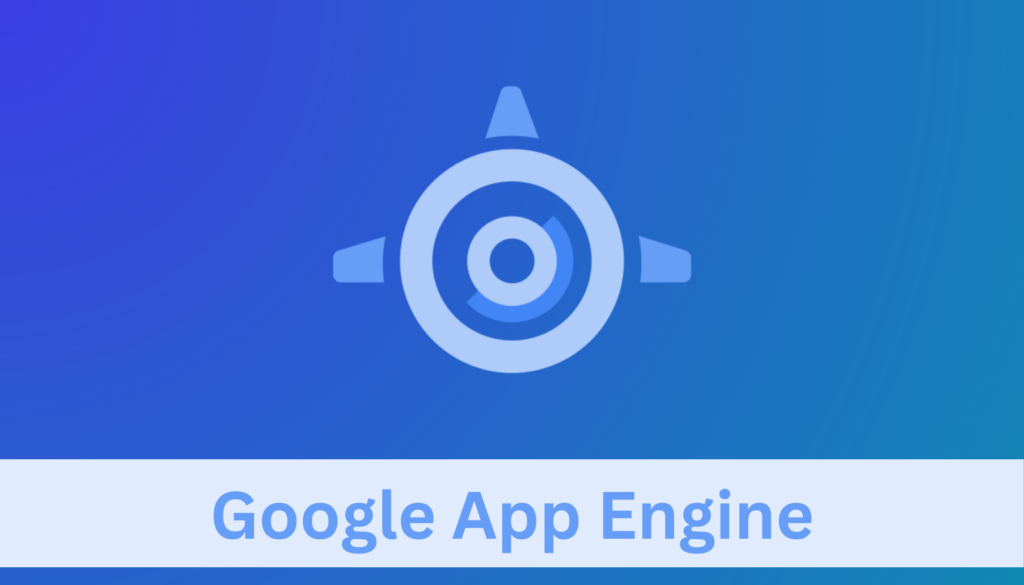What is Google App Engine?
Google App Engine is a fully managed, serverless platform for developing and hosting web applications at scale. It allows you to build and deploy applications on a platform that automatically handles the infrastructure, scaling, and performance optimization aspects. One of the key benefits of Google App Engine is its ability to streamline application development, freeing you from the complexities of server management.
This service is ideal for developers looking to deploy cloud-based apps without the overhead of managing infrastructure. It supports popular programming languages, and integrates seamlessly with other Google Cloud services, enhancing its utility in a wide range of development scenarios. Whether you’re building a small application or a large enterprise system, Google App Engine provides an excellent, scalable platform that adapts to your application’s needs.
What are the Key Features of Google App Engine?
1. Fully Managed Environment
Google App Engine’s fully managed environment is a standout feature. It takes care of infrastructure management tasks such as provisioning, maintenance, and scaling of servers. This means you can focus on writing code without worrying about the underlying hardware. The environment automatically scales your application in response to the incoming traffic and scales down when the demand decreases, ensuring optimal resource utilization and cost efficiency.
2. Integrated Services
App Engine is seamlessly integrated with various Google Cloud services like Cloud Storage, Cloud SQL, and Cloud Datastore. This integration allows for easy access and management of storage, database, and other cloud resources, directly enhancing your application’s functionality and performance. The native integration also simplifies the development process, as you can leverage these services without extensive configuration.
3. Developer Tools
Google App Engine offers a range of developer tools that simplify coding, deployment, and debugging. These tools include SDKs for local development, plugins for popular IDEs, and a powerful console for managing applications. These tools are designed to improve developer productivity and make the deployment process more straightforward and efficient.
4. Monitoring and Analysis Tools
The platform includes advanced monitoring and analysis tools such as Google Cloud Monitoring. These tools provide detailed insights into your application’s performance, allowing you to monitor, log, and diagnose issues in real-time. This feature is crucial for maintaining the health and performance of your applications, ensuring high availability and a great user experience.
5. Scalability
One of the most significant advantages of Google App Engine is its automatic scalability. It can handle spikes in traffic by automatically scaling your application horizontally, i.e., adding more instances as needed. This scalability ensures that your application remains responsive and available, even under heavy load, without any manual intervention.
6. Language and Framework Support
Google App Engine supports multiple programming languages like Java, Python, Node.js, Go, Ruby, C#, and PHP, among others. This wide range of supported languages ensures that you can work in a familiar environment, using the languages and frameworks you prefer. This flexibility is crucial for a diverse development team and for projects that involve multiple programming languages.
Google App Engine Pricing Overview
Pricing Components
Google App Engine’s pricing model includes various components that collectively determine the overall cost. These components include:
- Instance Hours: Charged based on the computing resources consumed by your application.
- Network Usage: Charges for the data sent out of the App Engine to the internet.
- Storage Costs: Includes the cost of storing application data and files.
- Additional Services: Costs for using other Google Cloud services in conjunction with App Engine. Examples, are Cloud Storage, Cloud Logging, VPC, Redis, and more.
Pricing Models and Plans
Google App Engine offers flexible pricing models to suit different needs:
- Standard Environment: Ideal for applications with variable traffic. It offers a pay-as-you-go pricing model, where you only pay for the resources your application consumes.
- Flexible Environment: Best for applications needing more customization and access to underlying resources. It uses a similar pay-as-you-go model but with different resource and pricing structures.
Both environments offer on-demand pricing, meaning you pay for the resources you use without upfront costs.
What is included in App Engine Free Tier?
Google App Engine’s free tier is an attractive option for small-scale applications or for testing purposes. The free tier includes:
- Per day 28 hours for “F” instances and 9 hours per day for “B” instances in the free tier.
- Per day 1 GB of outbound data transfer from App Engine.
The free tier allows you to experiment with App Engine’s capabilities without incurring immediate costs, making it an excellent choice for learning and development purposes.
How to Optimize Google App Engine for Cost Savings?
Optimizing costs in Google App Engine involves strategic resource management and making the most of the platform’s features. Here are several strategies to consider:
- Efficient Resource Utilization: Design your application to use resources efficiently. Optimize your code to reduce CPU and memory usage, which directly impacts the number of instance hours consumed.
- Scheduling Strategies: Implement scheduling strategies for tasks that do not need to run continuously. This can be particularly effective in the standard environment where instances are scaled to zero when not in use.
- Utilizing Free Tier: Leverage the free tier for development, testing, or small-scale deployments. This can significantly reduce costs, especially during the early stages of your project.
- Optimal Configuration: Choose the right instance type and size for your application. Over-provisioning leads to unnecessary costs, while under-provisioning might affect performance. Regularly review and adjust configurations based on current needs.
- Usage Monitoring: Regularly monitor your application’s performance and resource usage with tools like Google Cloud’s operations suite. This helps in identifying and addressing inefficiencies and reducing wastage of resources.
By adopting these strategies, you can effectively manage and optimize your costs on Google App Engine, ensuring you get the best value for your investment in the cloud.
Conclusion
Google App Engine offers a powerful, scalable platform for application development and hosting, with a range of features designed to simplify and enhance the development process. Its pricing structure is flexible, catering to varying needs, and there are numerous strategies to optimize costs effectively. Consulting with cloud professionals is recommended for best results in implementing and managing applications on Google App Engine. This ensures that you leverage the full potential of the platform while maintaining cost efficiency.
Ready to Optimize Your Google App Engine Usage?
[Reach out for specialized guidance] to ensure your setup is both cost-effective and high-performing.

